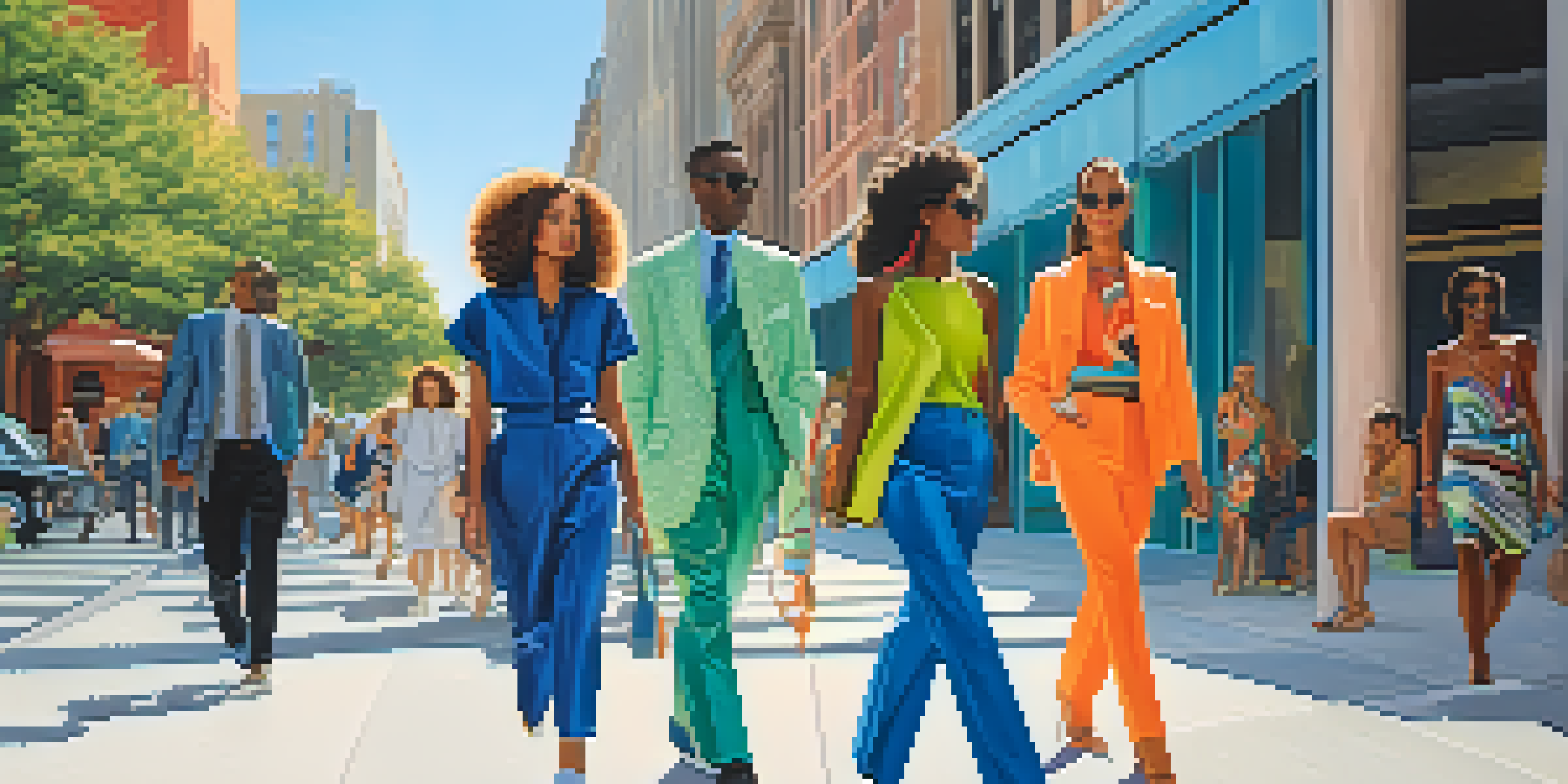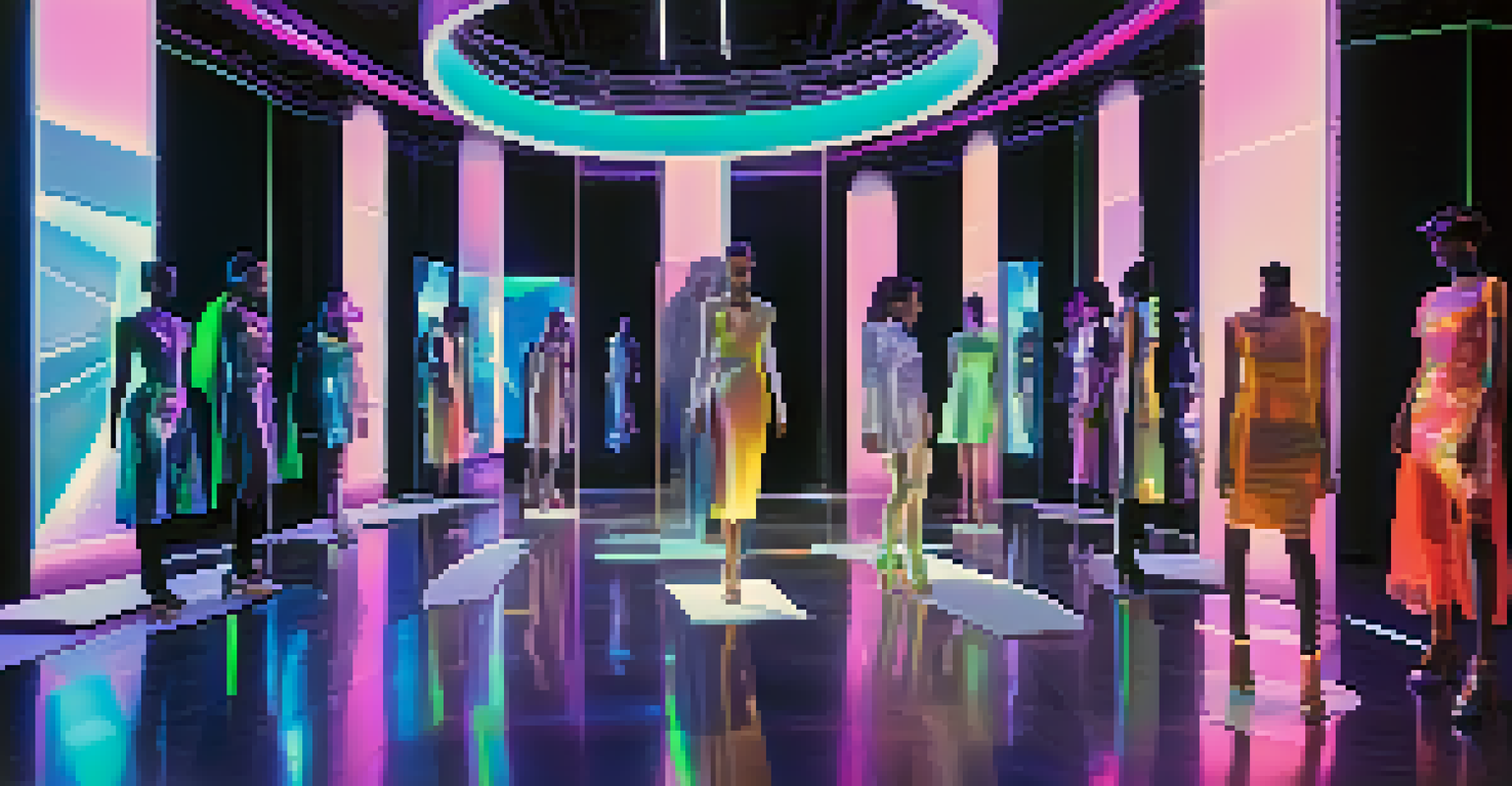How AI is Transforming Fashion Trend Forecasting in 2023

Understanding Fashion Trend Forecasting in 2023
Fashion trend forecasting is the process of predicting what styles, colors, and materials will be popular in the upcoming seasons. In 2023, this process is more dynamic than ever, thanks to advancements in technology and data analytics. Gone are the days when fashion trends were solely based on intuition or past collections; now, data-driven insights play a crucial role.
Fashion is about dreaming and making other people dream.
Forecasting involves analyzing various factors, such as consumer behavior, social media trends, and even economic indicators. By leveraging this information, brands can create collections that resonate with their target audience. This year, the integration of artificial intelligence (AI) into this process is revolutionizing how designers and retailers approach their creative strategies.
So, how exactly is AI changing the game? By processing vast amounts of data at lightning speed, AI helps identify patterns and emerging trends, allowing fashion professionals to stay ahead of the curve. This ensures that collections are not only timely but also relevant to consumers' evolving preferences.
AI Tools Enhancing Trend Analysis and Insights
One of the most significant advancements in fashion trend forecasting comes from AI tools that analyze data from various sources. For instance, platforms like Edited and WGSN utilize AI algorithms to scan social media, e-commerce sites, and even runway shows to gather real-time data. This enables fashion brands to quickly adapt to shifting consumer preferences and emerging trends.

These tools can provide insights into color trends, fabric choices, and even specific garment styles that are gaining popularity. By using machine learning, they continuously improve their predictions based on new data, making them incredibly valuable for designers and marketers alike. As a result, brands can make informed decisions about their upcoming collections.
AI Transforms Fashion Trend Forecasting
In 2023, AI plays a pivotal role in analyzing consumer behavior and market trends, helping brands create timely and relevant collections.
Imagine being able to see which shades of blue are trending before they hit the mainstream. With AI tools, this is not just a dream—it’s a reality for many fashion companies in 2023. The ability to access timely data allows brands to stay relevant and competitive in a fast-paced market.
Consumer Behavior Insights Powered by AI
Understanding consumer behavior is essential for any brand looking to succeed in the fashion industry. AI plays a pivotal role in analyzing shopping habits, preferences, and even social media interactions. By examining this data, brands can gain a deeper understanding of what drives their audience's choices.
Sustainability is no longer a trend; it's a necessity in fashion.
For example, AI can track how often consumers engage with specific styles or influencers, providing insights into shifting preferences. This information helps brands tailor their marketing strategies and product offerings to align with what consumers want. In 2023, this level of personalization is becoming increasingly critical for success.
Think of it this way: if a brand knows that its audience prefers sustainable materials and vibrant colors, it can focus its efforts on those areas. AI not only helps brands identify these trends but also allows them to respond swiftly, enhancing customer satisfaction and loyalty.
Sustainability and Ethical Fashion Through AI
Sustainability is a pressing concern in the fashion industry, and AI is stepping up to the plate to help brands make more ethical choices. By analyzing data related to environmental impact and consumer demand for sustainable products, AI can guide brands in their decision-making processes. This is particularly important as consumers increasingly prioritize eco-friendly options.
For instance, AI can assist in predicting which sustainable materials will be popular, allowing brands to invest in those resources ahead of time. Additionally, AI can help identify inefficiencies in supply chains that may lead to waste, allowing brands to refine their processes and reduce their carbon footprint.
Personalization Enhances Shopping
AI-driven personalized recommendations improve customer satisfaction by aligning product offerings with individual consumer preferences.
In 2023, the marriage of AI and sustainability is not just a trend; it’s a necessity. As consumers become more conscious of their purchasing power, brands that leverage AI to promote ethical fashion will likely gain a competitive edge.
AI's Role in Personalized Fashion Recommendations
Personalization has become a key factor in enhancing the shopping experience, and AI is at the forefront of this trend. By analyzing individual consumer data, AI algorithms can provide tailored recommendations that align with a shopper's unique style and preferences. This not only improves customer satisfaction but also drives sales.
For example, platforms like Stitch Fix use AI to analyze user preferences and provide personalized clothing suggestions. By understanding customer tastes, brands can create a more engaging shopping experience that keeps consumers coming back for more. In 2023, this level of personalization is becoming standard practice.
Picture walking into a store where every product seems to have been curated just for you. That’s the power of AI in fashion retail, and it’s helping brands build stronger relationships with their customers.
AI-Driven Virtual Fashion Shows and Experiences
In recent years, virtual fashion shows have gained popularity, and AI is enhancing these experiences in exciting ways. By utilizing AI technology, brands can create immersive digital environments that allow consumers to experience collections in a unique and engaging manner. This approach has been particularly useful in the wake of the pandemic, where traditional runway shows faced challenges.
AI can help design virtual spaces that reflect the essence of a brand while showcasing their latest collections. Additionally, augmented reality (AR) features powered by AI can allow consumers to interact with garments in ways that were previously unimaginable. This not only captivates audiences but also broadens the reach of fashion shows beyond the physical limitations of a venue.
Sustainability Gains Focus in Fashion
AI helps brands make ethical choices by predicting sustainable material trends and identifying supply chain inefficiencies.
Imagine watching a fashion show from the comfort of your home, with the ability to click on garments and learn more about them instantly. AI is making this possible, and in 2023, it’s transforming how consumers engage with fashion.
Challenges and Considerations in AI Fashion Forecasting
While the integration of AI in fashion trend forecasting brings numerous benefits, it also presents challenges that brands must navigate. For one, the reliance on data can sometimes lead to an overemphasis on trends rather than fostering creativity. When brands focus solely on data-driven insights, there’s a risk of diluting their unique identity.
Additionally, data privacy concerns are increasingly relevant as brands collect information about consumer behavior. Striking a balance between personalization and privacy is crucial for maintaining consumer trust. In 2023, brands must be transparent about how they use data and ensure that their practices align with ethical standards.

Ultimately, the successful use of AI in fashion forecasting hinges on finding the right balance between data-driven insights and creative expression. Brands that navigate these challenges effectively are likely to thrive in the dynamic landscape of the fashion industry.